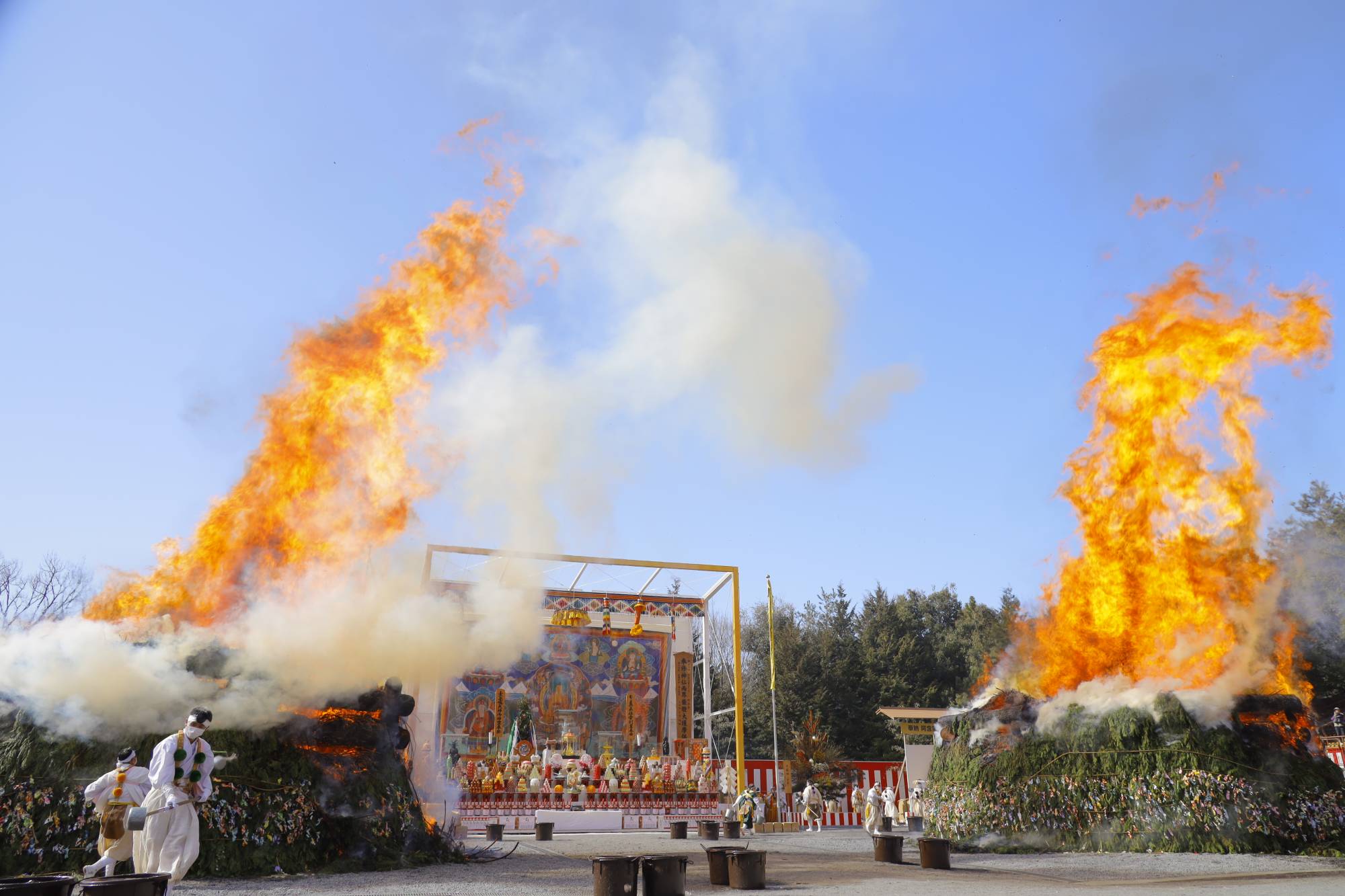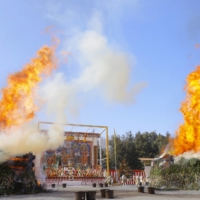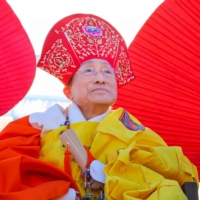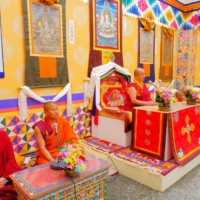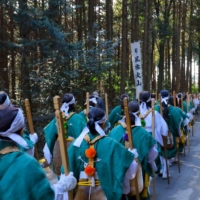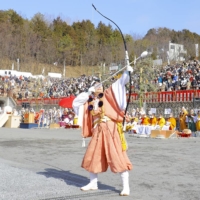The world has changed in countless ways over the past 50 years. The digital revolution, the collapse of the Soviet Union, the climate change crisis, the advent of artificial intelligence — these and many other game-changing developments have made the world of 2023 very different from that of the ’70s.
The Agon Shu Buddhist Association held its first annual Fire Rites Festival in 1970. Against the background of these past five decades of change, the festival — the world’s biggest such event — has been a constant source of spiritual solace and inspiration. Every year, members of the association make a pilgrimage to the site of the festival, an amphitheater in Agon Shu’s complex of shrines and temples in the hills of eastern Kyoto, Japan’s ancient capital.
Joyful occasion
It’s a joyful occasion when old friends meet and share the festival’s warm and inviting atmosphere. But it’s also solemn and serious, as Agon Shu believers offer heartfelt prayers for the living and the dead, not to mention the peace and happiness of all sentient beings, in accordance with the time-honored teachings of the Buddha. While the Fire Rites Festival has seen some changes over the past 50-plus years, these basic elements of the event have remained the same.
The biggest change came in 1993, when for the first time it was held as a syncretic blend of Buddhist and Shinto rituals. Since then it has been formally titled the Combined Shinto-Buddhist Fire Rites Festival, which makes it unique among Japanese religious events.
Agon Shu also differs from other Buddhist organizations in an important and fundamental way. Unlike other schools of Buddhism active in Japan, Agon Shu’s core doctrines are based on the Agama Sutras. These are the first written records of the original teachings of Buddha, and it is from them that Agon Shu derives its name. These scriptures contain the precepts known as the “seven systems and 37 curricula” that the Agon Shu faithful must understand and practice to become Buddhists in the true sense of the word.
Happiness and salvation
Agon Shu was formally established as a Buddhist organization in 1978 by the late Rev. Seiyu Kiriyama. Like many people, Kiriyama had spent a long time looking for a source of spiritual stability and inspiration amid the distractions and illusions of modern society. He found what he was looking for in the Agama Sutras. By founding the association, he showed people in Japan and around the world a path to personal happiness and salvation. Agon Shu is now a community of Buddhist followers with 90 ordained priests as well as 76 institutions and roughly 300,000 believers in Japan.
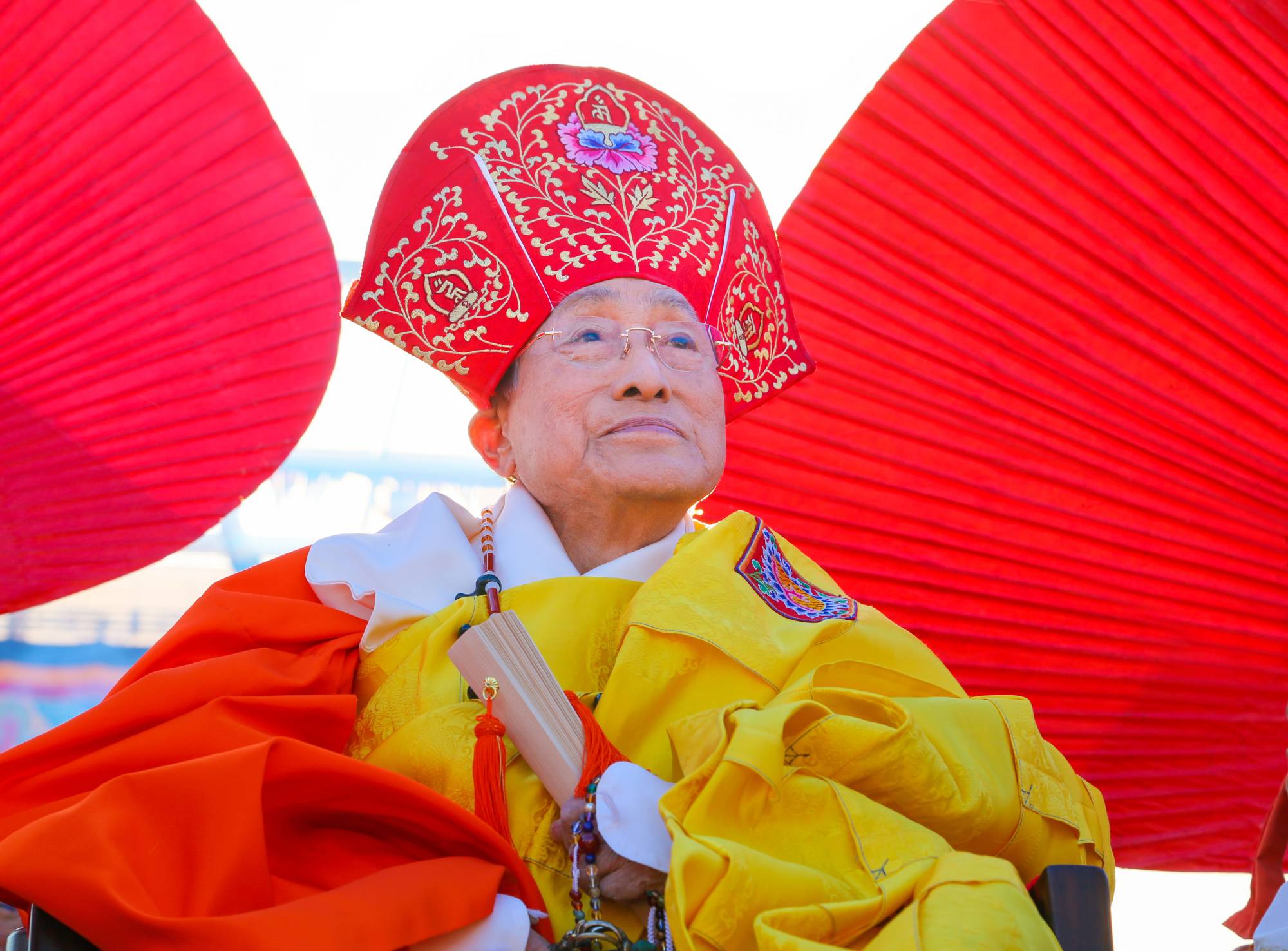
In Buddhist terms, Agon Shu comprises a community called a sangha, which is one of the three main elements found in all forms of Buddhism. The other two are the Buddha — the ultimate object of worship — and the dharma, which comprises the teachings and discipline or training methods of the Buddha.
Eclectic approach
In keeping with its eclectic approach to offering spiritual solace in our chaotic, ever-changing world, Agon Shu includes elements from Mahayana, Theravada and esoteric Buddhism. It also incorporates aspects of Japan’s indigenous Shinto religion and Taoism from China.
This year’s festival was attended by monks from Sri Lanka and Bhutan for the first time in three years as Japan gradually emerges from pandemic-induced isolation. Agon Shu faithful from Taiwan were also on hand.
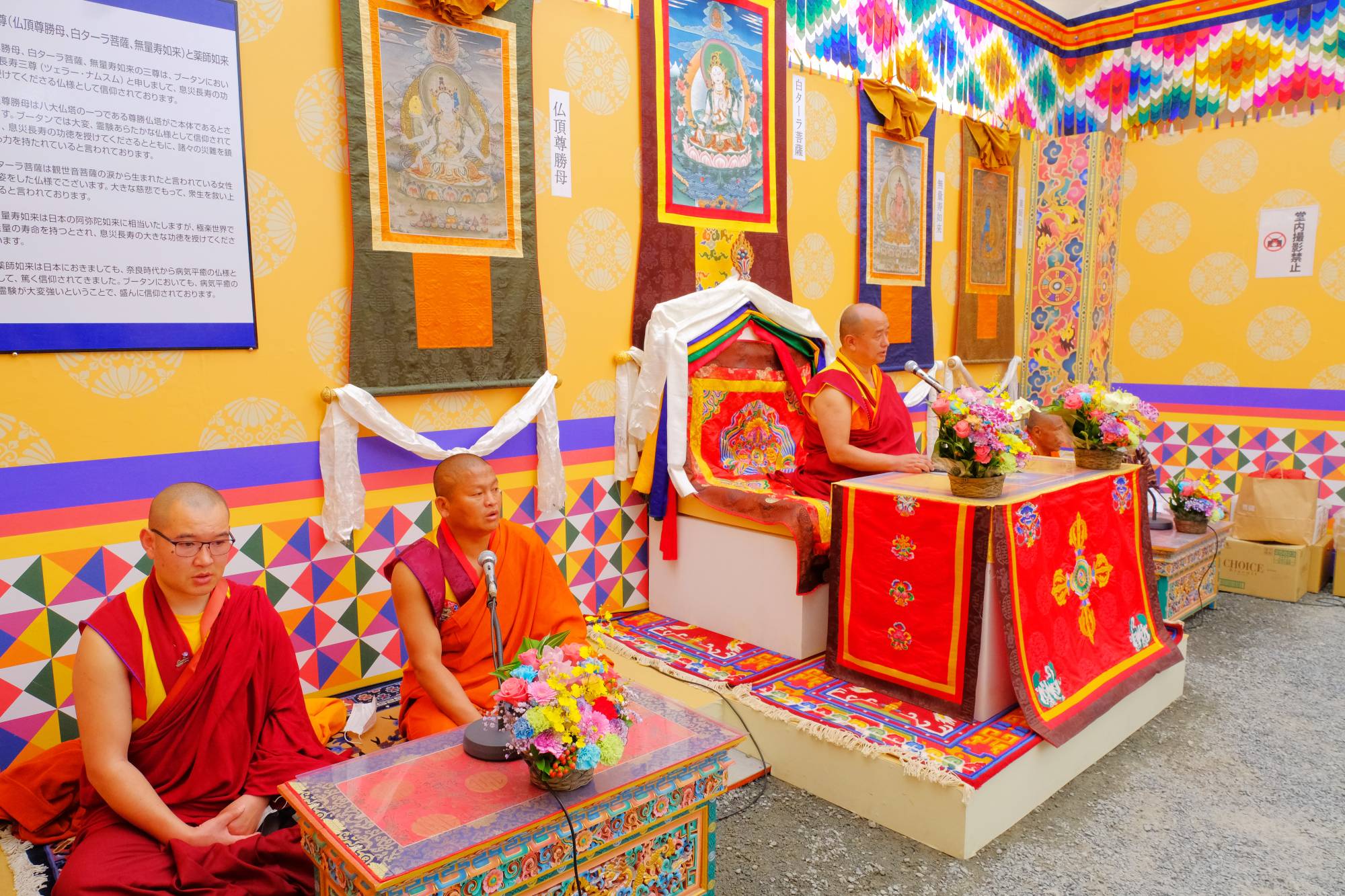
‘Amazing and inspiring’
“This is my first festival,” said Sonam Todgay, a monk from Bhutan. “It’s amazing — it’s very inspiring. We feel it will bring people around the world a lot of prosperity and happiness.”
“I had previously come to Japan to study, but this is the first time I’ve attended a Fire Rites Festival,” said Roshan, an Agon Shu member from Sri Lanka. “People are praying for world peace, which I think is wonderful. And I have my own personal prayers.”
The big variable that affects the Fire Rites Festival is the weather. Past festivals have seen rain, snow, sleet or freezing cold. This year the weather was unseasonably warm — the temperature rose to 16 C. It was as if Mother Nature herself were offering a warm welcome to the foreign visitors who were once again gracing the event with their presence.
Entering the amphitheater, you are struck by the sight of two huge piles of logs and branches occupying an open area in front of a spectacularly colorful Buddhist altar that takes up one side of the amphitheater. These are the gomadan, which will later be set alight as the festival reaches its fiery climax. One is the bukkaidan, for the liberation of the spirits of the departed, while the other is the shinkaidan, for the prayers, requests and desires of the living. Hundreds of people, comprising the faithful and the curious, filled the bleachers on two sides of the amphitheater.
Soul-stirring
The morning calm was broken by the booming sound of a symphony written especially for the festival by the late composer Toshiro Mayuzumi. It was soul-stirring stuff, and set the scene for the procession of Agon Shu faithful dressed in colorful yamabushi (mountain priest) costumes from the adjoining hills into the amphitheater’s central enclosure. They took their designated places in front of the altar while blowing on conch shells. Some of them then beat out a steady and infectious rhythm on taiko drums. Then composer Hideki Togi’s haunting music, a blend of ancient gagaku court music and New Age sounds, shifted the mood to one of meditative calm.
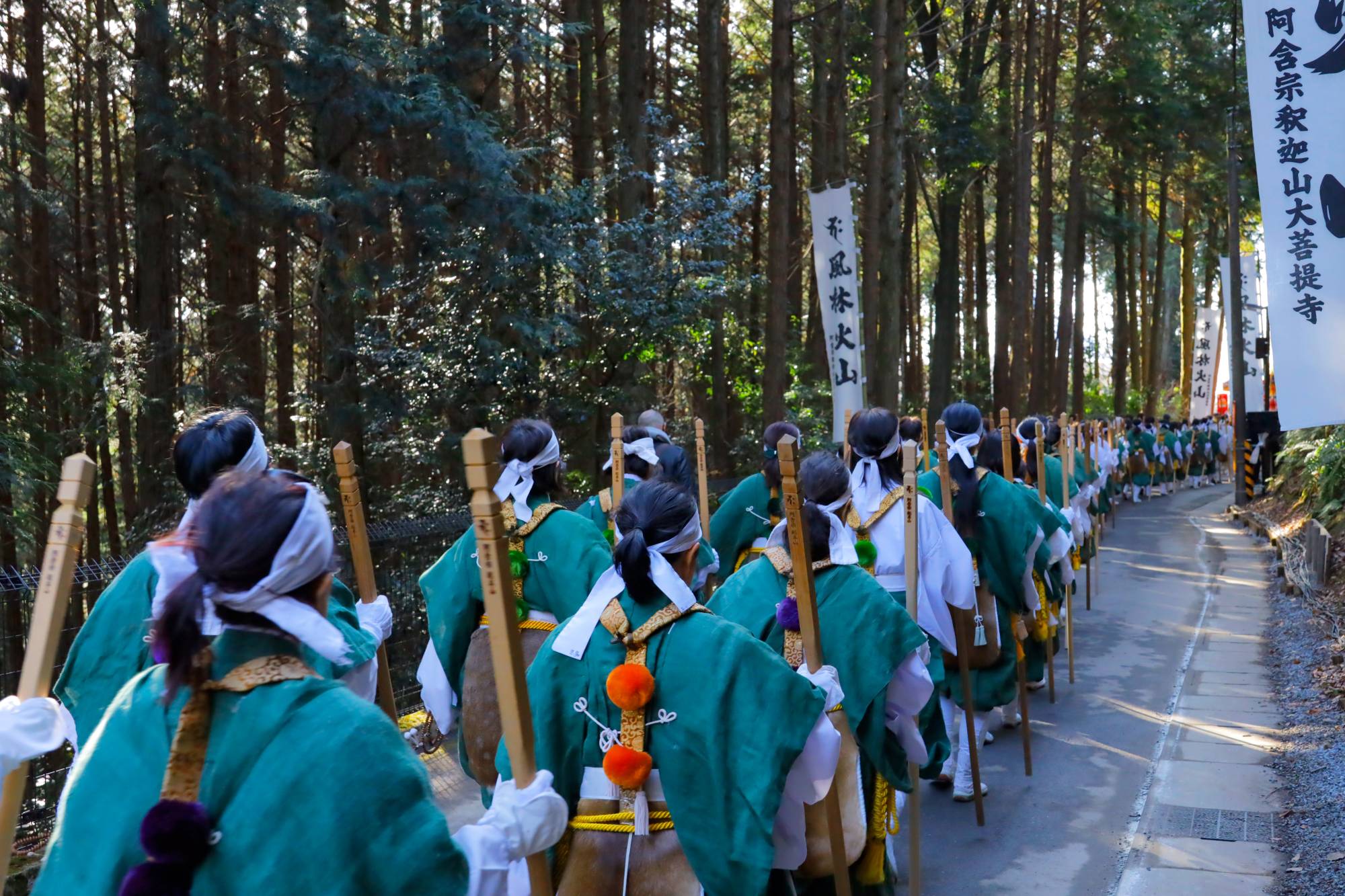
Before the bonfires were lit, several rituals were held to ensure the festival’s success. One involved an attendant dispelling evil spirits by wielding a long-handled ax with a curved blade. Four female archers then shot rubber-tipped arrows out of the amphitheater as part of the process of spiritual cleansing and renewal. At least two members of the audience caught the arrows, which must have felt rather auspicious for them. Then came a mondo (question-and-answer) exchange on religious doctrine performed by some of the yamabushi-costumed faithful.
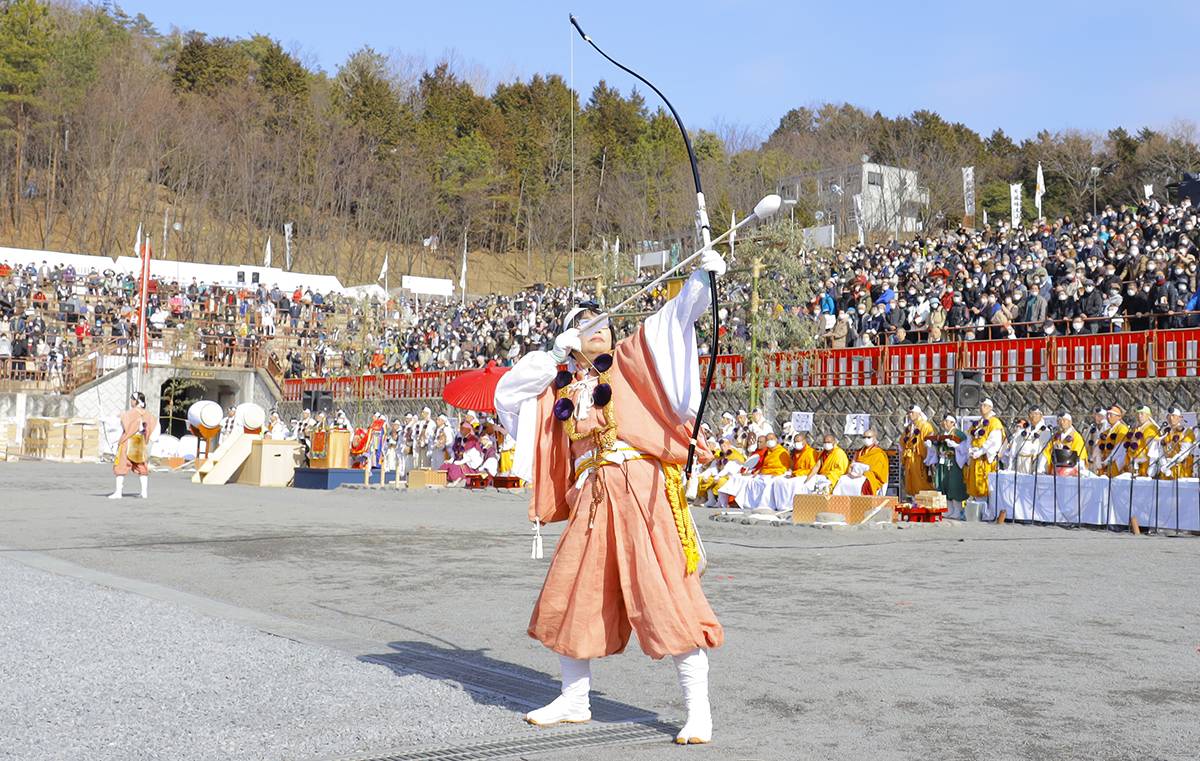
The moment everyone was waiting for finally arrived. Four huge torches were lit, and attendants inserted them at the base of the gomadan pyres. Thick, gray smoke began to billow out of the pyres, and vivid orange flames soon burst forth. It soon became quite warm in the amphitheater. As always, it was an awesome sight.
Attendants started throwing gomagi (prayer sticks), on which believers had written their personal prayers and desires, into the flames. A total of 20 million gomagi were burned in this year’s festival.
“People are very happy to watch this event and I think it’s very good for them,” said Paul Peceing of the Netherlands.
“The atmosphere is very warm compared to previous years,” said Mayumi Nagaoka. “And I’m a bit surprised by how many people there are here today.”
Overseas activities planned by Agon Shu this year include a special memorial service for the war dead on the Philippine island of Luzon in May and the completion of a memorial hall in Israel, a country with which Agon Shu has close links.



